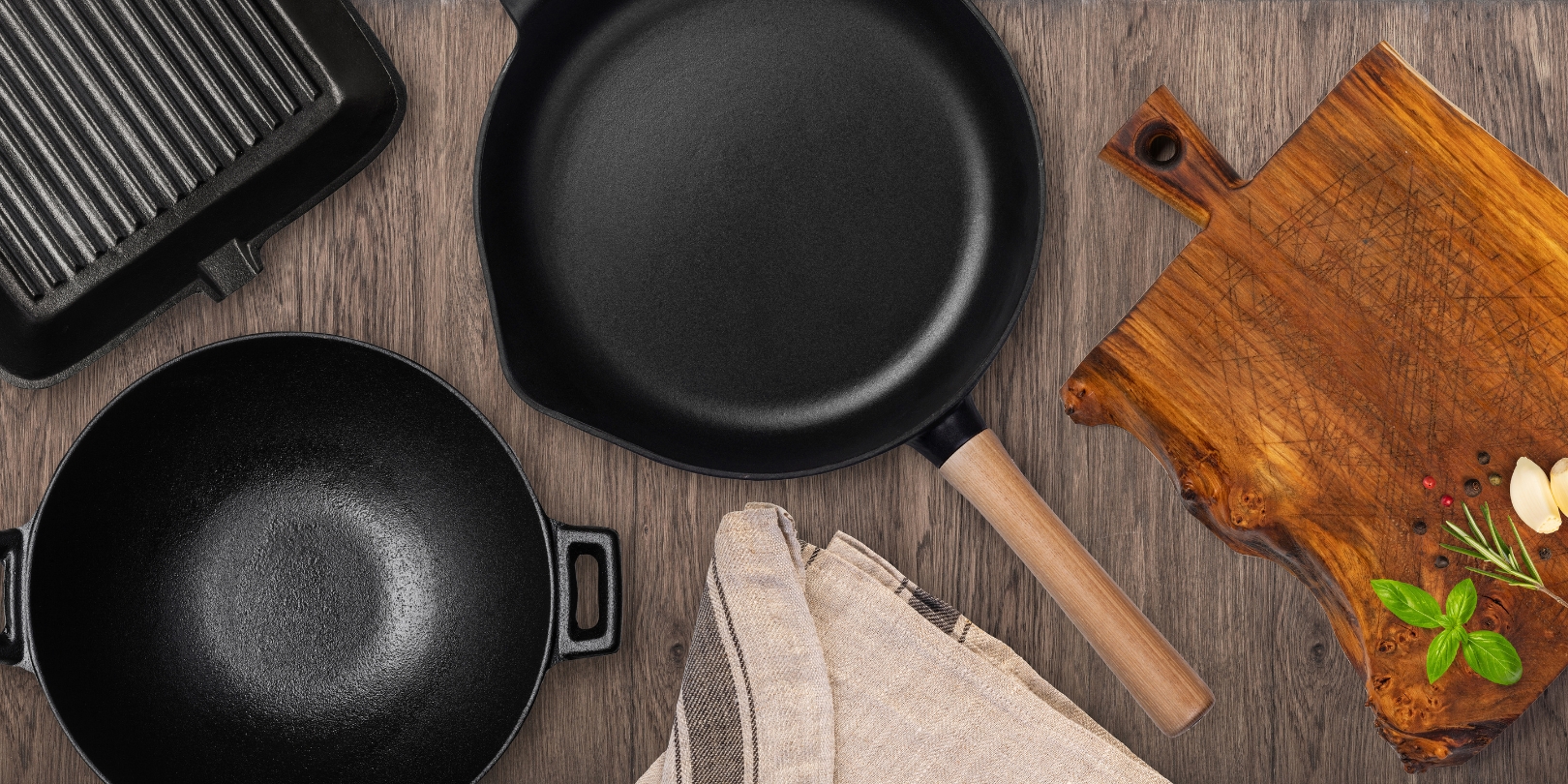Cast Iron vs. Carbon Steel: Which is the Better Choice?

For a seasoned home chef, the question of which cookware is the “better” choice is nothing new. Although non-stick pans often get a lot of hype, serious cooks will always prefer the style and function of carbon steel and cast iron pans. But which is the better choice for you?
In this post, we’ll break down the ins and outs of carbon steel and cast iron pans, so you can decide about investing in your cookware. We’ll compare heat distribution, durability and maintenance, ease of use, cost, and more, so you can make a decision that fits your needs.
Overview of Cast Iron
Cast iron cookware has been around since the 17th century, known for its durability and heat retention capabilities. Made by combining iron ore with carbon, which creates a strong material with a low melting point. Plus, cast iron is virtually non-reactive so it won’t leach any potentially unhealthy metals or acids into your food.
On the downside, cast iron is extremely heavy, which makes it difficult to move and handle. Additionally, it tends to be rough on utensils and can easily be scratched if not cared for properly. This isn’t necessarily bad; however, you should consider this if you’re looking for something that will last you a lifetime.
Overview of Carbon Steel
Carbon steel is similar to cast iron in heat distribution and retention capabilities but has some unique advantages. Firstly, carbon steel pans are often crafted from one piece of metal, eliminating seams or weak points in the material, making them easier to clean than other cookware. Secondly, while still being quite heavy compared to other options like stainless steel, carbon steel pans are lightweight compared to cast iron.
Despite these advantages, carbon steel does have one significant downside: it rusts quickly when exposed to water or moisture. This means that if you opt for a carbon steel pan, you must take extra steps to keep it clean and dry to maximize its life span. It’s not quite as non-reactive as cast iron and may leach small amounts of metal into your food if not correctly seasoned or maintained.
Comparison of Cast Iron and Carbon Steel
When comparing cast iron and carbon steel pans side-by-side, there are several vital aspects to consider: weight, heat distribution/retention capabilities, reactivity, cost, and durability/maintenance requirements.
Weight-wise, cast iron pans tend to be much heavier than their carbon steel counterparts; this makes them ideal for tasks such as searing or baking – but can make them less practical for everyday use due to their weightiness (though some might argue that this adds to their charm).
In terms of heat distribution/retention capabilities, cast iron and carbon steel excel in this area – with the latter providing slightly better performance due to its single-piece makeup (no weak seams or edges). Regarding reactivity, cast iron is the clear winner – with nearly no potential for leaching metals or acids in your food (unless it has broken down significantly).
Cost-wise, both options are roughly equivalent – though carbon steel typically carries a slightly higher price tag mainly due to its lighter weight construction and ease of use (when properly maintained). Finally, regarding durability/maintenance requirements, both options require regular care (primarily drying or oiling after use). However, carbon steel will need extra attention, given its vulnerability to rusting when exposed to moisture.
How to Choose the Right Option
When deciding between a cast iron pan and a carbon steel pan for your kitchen arsenal, you should first consider your typical cooking style and how frequently you plan on using each option over time (in addition to any relevant budget concerns). If you enjoy spending time tending fires over an open flame, opting for a reliable cast iron pan is best for you. Similarly, if you tend towards lighter tasks such as sautéing vegetables, a more lightweight yet highly efficient carbon steel pan could be an ideal choice. Ultimately when choosing between these two popular types of cookware, the best answer lies in determining how each option would best fit your particular lifestyle or cooking style needs over time.
Conclusion
Ultimately, it all comes down to preference and lifestyle when it comes to cast iron vs. carbon steel. Both types of pans excel in their respective areas, so take the time to consider your needs and choose the best option for you. By doing so, you can ensure you’ll have the perfect pan for years.
